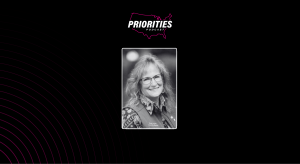Broadband groups urge NTIA to let states define ‘community anchor institutions’ for BEAD funds

In a letter sent Monday to the National Telecommunications and Information Administration, two advocacy groups urged the agency to allow states to define what constitutes a community anchor institution under the $42.45 billion Broadband Equity, Access, and Deployment, or BEAD, program.
The groups — the Schools, Health & Libraries Broadband Coalition and the Benton Institute for Broadband & Society — said that the BEAD guidance released in June included additional changes to what states can define as community anchor institutions, narrowing the scope of what qualifies as a CAI or a “community support organization.” This also narrows the number of locations across the country that would be eligible for BEAD funds for new or upgraded internet connections.
The more narrow definition of a CAI in the revised guidance also calls into question what states will be able to do with remaining BEAD funds. Recent estimates have found that the total number of BEAD eligible locations across states has decreased by about 65% since 2022, which could potentially precipitate millions of dollars in leftover funds. The original BEAD guidance allowed states to use these remaining funds to connect more CAIs once all unserved and underserved locations were connected first.
Under the expansive definition provided by the 2021 Infrastructure Investment and Jobs Act, former President Joe Biden’s hallmark legislation which created the BEAD program and other funding for state and local broadband and digital equity efforts, states could designate a variety of public institutions and organizations as CAIs.
These included entities such as libraries, hospitals, colleges, public housing organizations or facilities used by large numbers of people who are low-income, unemployed or elderly. The original BEAD program guidance also gave states additional flexibility, allowing them to propose additional types of institutions to be treated as CAIs. More than 40 states had proposed that locations like senior centers or job training centers be treated as CAIs, according to the Benton Institute.
The June guidance directed states to instead adhere to the original definition of eligible CAI locations, and added a caveat that the NTIA would both narrowly interpret the BEAD program language to determine eligibility and reserve the right to reject any CAI designation or proposal.
The new guidance also states that to be eligible, CAIs must be located in government-owned facilities that also provide public internet service and digital skill training. A recent FAQ for BEAD published by the NTIA narrowed the scope even further.
“We are concerned that this determination: i) could result in eliminating critical CAI locations from BEAD project areas, which could disadvantage rural and urban unserved and underserved areas, and ii) removes the broad deference and expansive flexibility Congress provided to states to determine BEAD-eligible CSO locations,” reads Monday’s letter, which was addressed to NTIA Assistant Secretary Arielle Roth, who was confirmed by the Senate last month.
The broadband advocacy groups worried in their letter that rural communities far from CAIs may instead rely on churches or senior centers with internet access, which under the new definitions wouldn’t be eligible for funds. They also noted that some community support organizations would lose the opportunity to upgrade their services or facilitate digital skills training with BEAD funding.
In a new blog post, the Benton Institute noted that as state broadband offices prepare their new BEAD final proposals, which are due on Sept. 4, state officials will also be tasked with reviewing their list of eligible CAIs. Expanding the definition, the organization said, could help reduce “laborious” work and provide internet access quickly.
“We urge NTIA to defer to states’ expertise and knowledge of their communities when making decisions about what locations fit the definition of CAI,” the letter read. “Such broad deference and expansive flexibility will conform NTIA’s policies with the intent of the IIJA and ensure that BEAD projects more completely respond to the direct and sometimes unique needs of communities and enhance the efficiency of broadband deployment in all underserved and underserved areas.”






